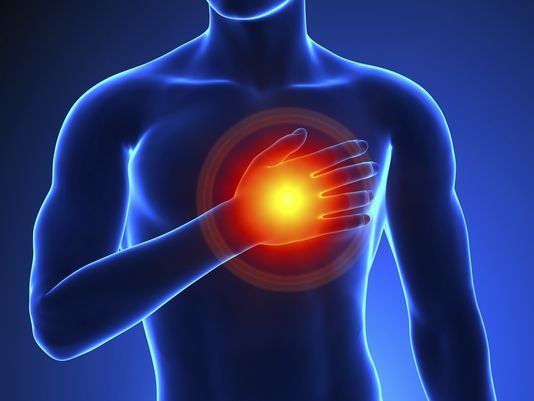
Health Correspondent
Published: August 7, 2025
Cardiac arrest
In a tragic incident that has unsettled many fitness enthusiasts and medical professionals alike, a seemingly healthy 29-year-old man collapsed and died of sudden cardiac arrest during a workout session, despite having no traditional risk factors like smoking, alcohol, or a poor diet.
According to Dr. Shagun Agarwal, the orthopaedic surgeon who closely followed the case, the young man—identified as Rohan—was a tech professional who frequented the gym six days a week, avoided junk food and vices, and was “disciplined to the core”
As he performed incline dumbbell presses, mid-rep, Rohan’s arms fizzled out, the weights dropped—and then he did. Upon realizing he wasn’t breathing, observers became perplexed and initially believed he may be kidding. Immediate CPR and medical attention followed—but it was too late .
When Health Doesn’t Guarantee Safety
Sudden cardiac arrest (SCA) is frequently misinterpreted as being tied to poor lifestyle or aging. In actuality, SCA can happen suddenly to even the young and seemingly healthy people.
The condition differs from a heart attack and typically contacts an electrical malfunction in the heart, leading to abrupt loss of heart function, unconsciousness, and danger of death unless treated immediately with CPR or a defibrillator . While age is a risk factor, young adults are not immune—especially if they harbor silent, inherited heart conditions.
Behind the Benign Facade: Possible Implicit Risks
In individuals under 35 or 40, common hidden causes of SCA include:
Genetic arrhythmia syndromes like Long QT or Brugada syndrome, both of which can cause lethal heart rhythms even in the absence of structural heart disease .Hypertrophic cardiomyopathy (HCM)—a thickened heart muscle condition often undiagnosed in young adults, particularly those with no symptoms WikipediaMayo Clinic.
Other rare triggers include silent congenital defects, myocarditis, or electrical abnormalities that don’t show on routine check-ups .
In about 20% of sudden cardiac deaths, postmortem analysis reveals no identifiable cause, rendering comprehensive screening and early detection a complex task .
Alarming Trend Among Youth
Medical practitioners and public health experts have noted a discernible uptick in such events among individuals in their 20s and 30s. A recent E conomic Times feature highlights this rising trend—especially post-pandemic—with many collapsing during workouts or even in sleep, despite being outwardly healthy.
In a related action, the Punjab government launched its first-ever health advisory aimed at preventing such incidents among gym-goers and athletes, emphasizing early screening and public awareness The Times of India.
What Can Be Done: Prevention & Awareness
While some causes of SCA are beyond detection, several preventive steps can help:
| Measure | Description |
|---|---|
| Routine medical screenings | Include ECGs, echocardiograms, and cardiac history reviews—even for young adults. |
| Family history awareness | Understanding familial patterns of heart disease or sudden deaths can guide screening. |
| Access to emergency kits | Schools and gyms must have AEDs (automated external defibrillators) and trained personnel on hand to act swiftly—it can double survival chances WikipediaPeople.com. |
| Education on warning symptoms | Fainting, dizziness, chest palpitations—even with exercise—should never be ignored The Sun. |
Final Thought: A Tale of Unseen Risk
Rohan’s story is a painful reminder that health and discipline alone do not guarantee cardiac safety. While tragic and abrupt, his passing brings into sharp focus the need for enhanced screening among young adults, greater awareness of silent cardiac conditions, and robust emergency readiness in community fitness environments.
If more young individuals and institutions prioritize preventive checks—especially those with access to medical resources—it can mean the difference between life and the unthinkable.
Ladies and gentlemen,
Today, I want to highlight the tragic loss of a 29-year-old man who collapsed and died from sudden cardiac arrest—despite being healthy, disciplined, and free from alcohol or smoking. This heartbreaking event reminds us that heart conditions can be silent and deadly, even in the fittest among us. As a society, we must raise awareness, promote regular heart screenings, and equip our gyms and public spaces with life-saving tools like defibrillators. Let us not wait for another life to be lost before we act. Health is precious—let’s protect it with knowledge, vigilance, and preparedness.
Fore More Healthe Related News Click Here
